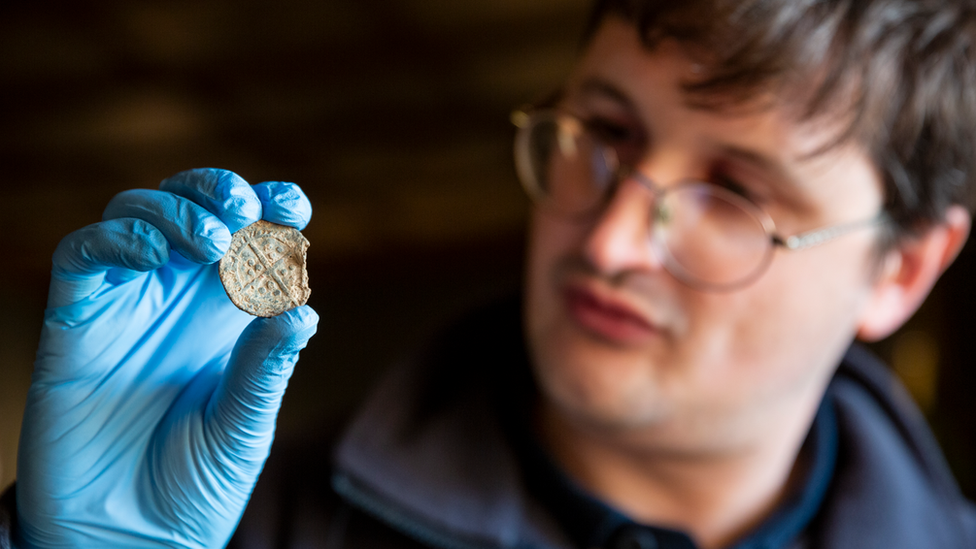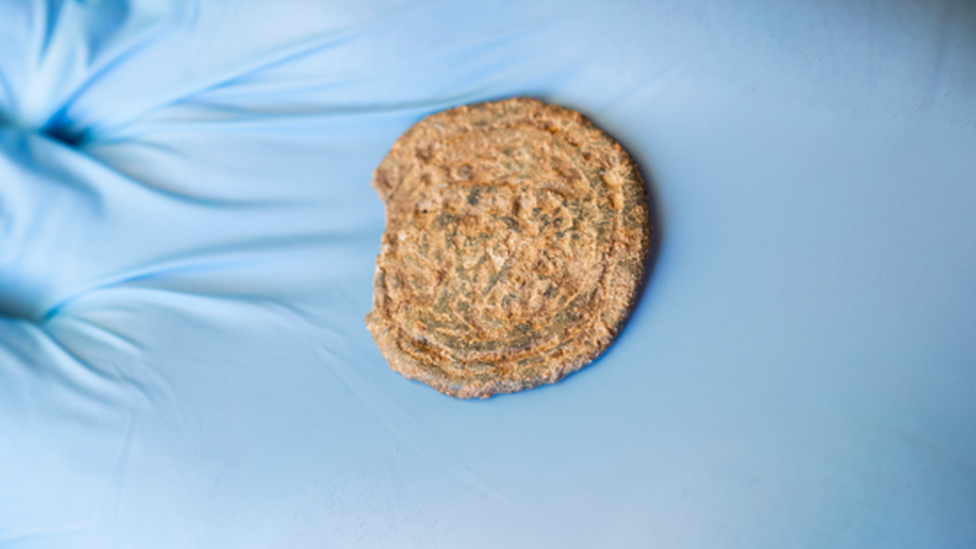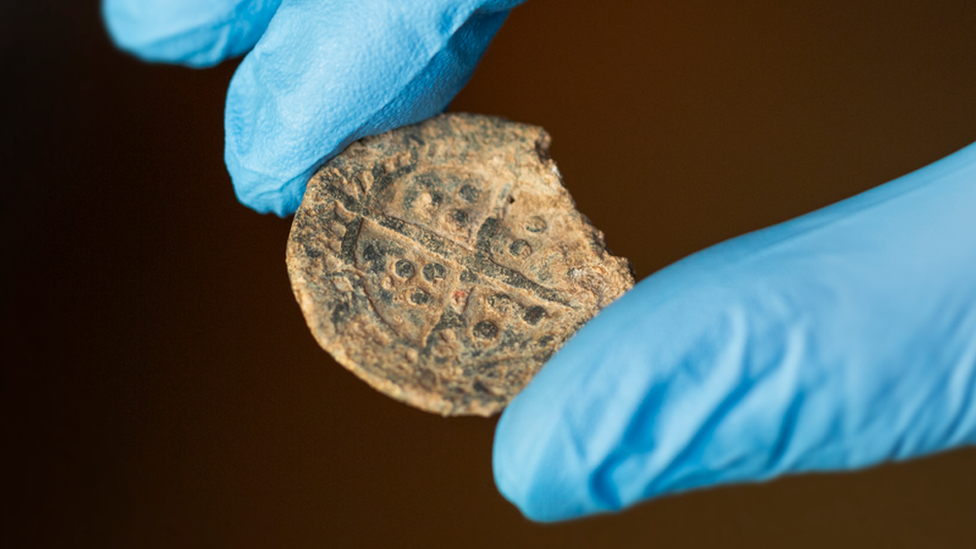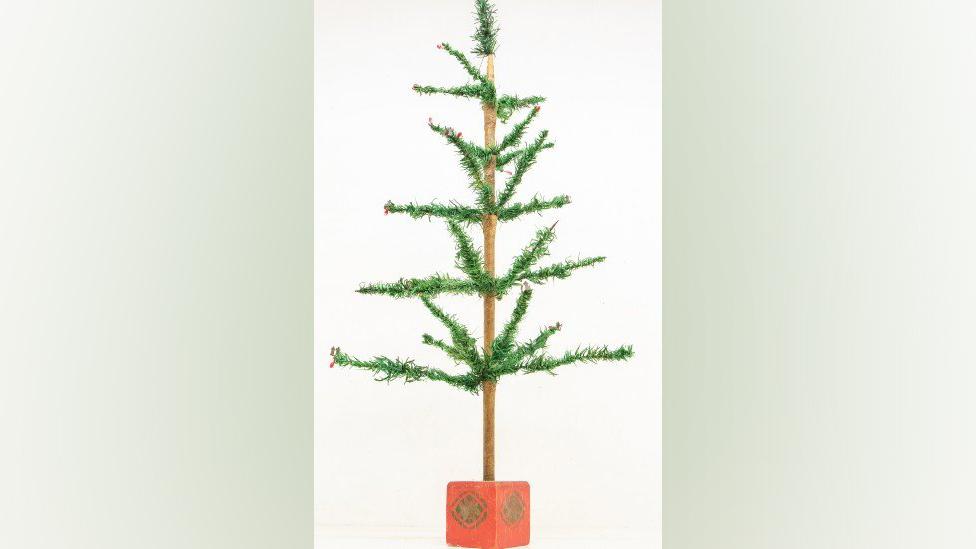Medieval Christmas food token found in Norfolk
- Published
- comments

The token is the size of a groat, which would have measured around 26mm in diameter
Can you imagine what Christmas looked like around 500 years ago?
Well this find by archaeologists in Norfolk might give you a little insight.
A food token dating back to medieval times has been found at the Oxburgh Estate in Norfolk, but it's thought to come from Bury St Edmunds Abbey in Suffolk which is about 30 miles away,
The National Trust said its discovery could show just how far people would travel for festive celebrations, which 500 years ago would've been done by foot or horse and cart.

One side of the token depicts a cross, while the reverse side is very corroded
Experts say during the medieval era these tokens were handed to the poor by a Boy Bishop - a local choirboy who was chosen to undertake the duties of the adult Bishop in a special ceremony in December.
The token could be exchanged for food during the period between the Feast Day of St Nicholas, on 6 December, and Holy Innocents Day, on 28 December.

The medieval token is believed to be between 463 and 553 years old
One side of the coin is well preserved and shows a long cross. The other side of the coin has corroded but most likely would've shown the head of a bishop.
Archaeologist Angus Wainwright said: "This discovery shows how rich the cultural life of even the poorest folk could be in the Middle Ages."
- Published29 December 2024

- Published19 December 2023

- Published17 December 2023

